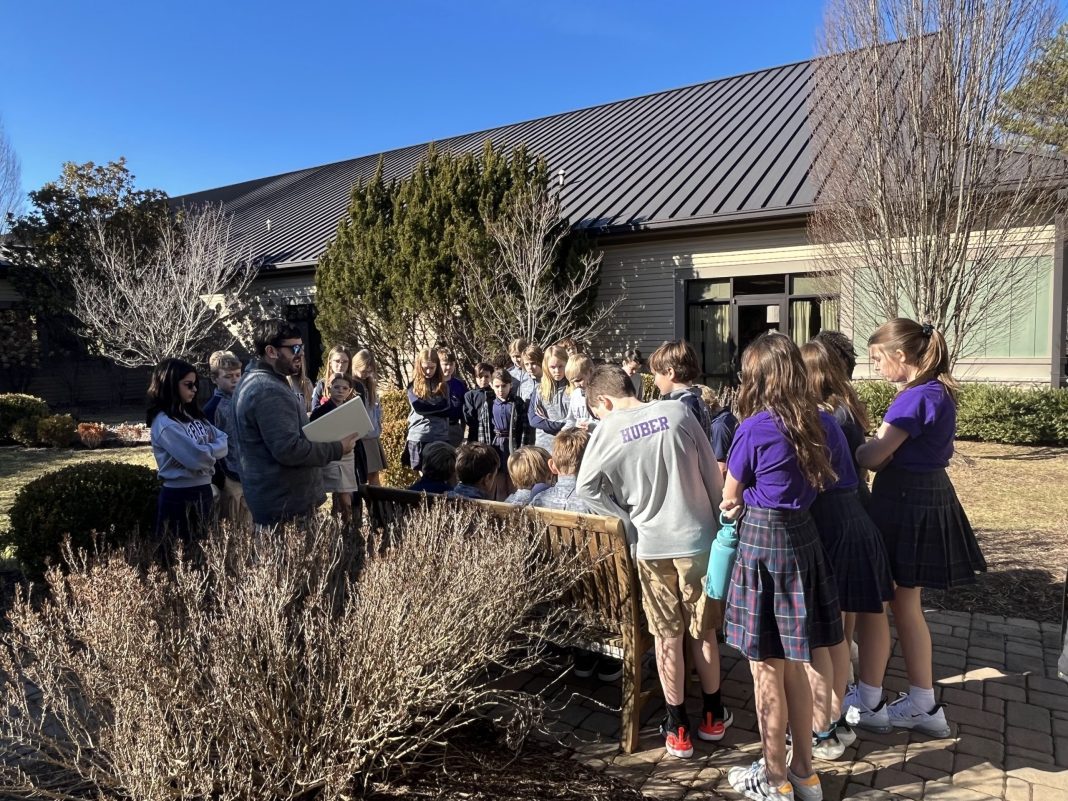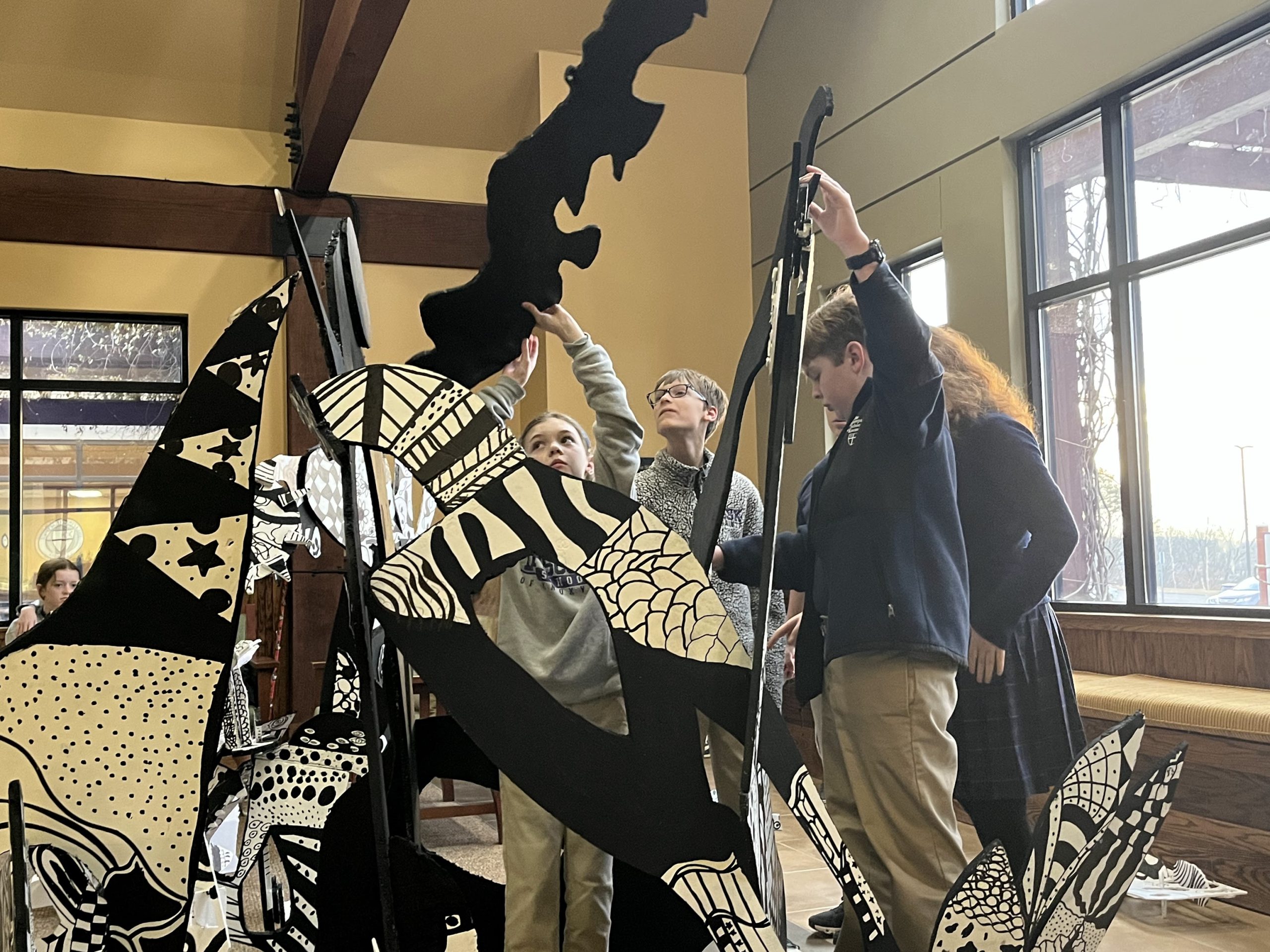To honor the life of Dr. Martin Luther King Jr. and to add a bit of history to this upcoming Black History Month, our middle schoolers participated in “A Walk with Brother Martin.” This activity was adapted from the Stations of the Cross, which is a devotional walk-through of Christ’s final moments. Our “Walk” took students through seven stations featuring words from Dr. King and prayers echoing his words. The stations featured Dr. King’s words in chronological order, so the students got to “walk” with him as he strove to open American ears, eyes, and hearts over the course of his witness.
This post is brought to you by our partners at The Episcopal School of Knoxville.
In the first station, the students listened to Martin Luther King Jr.’s address delivered at the Montgomery Improvement Association’s “Testimonial of Love and Loyalty,” on February 1, 1960. This speech was given shortly before King’s departure to Atlanta, the MIA honored him and his family at Ralph Abernathy’s First Baptist Church.
 Station two took our students three years in the future to August 28, 1963, in Washington, DC. This is where Dr. King gave possibly his most famous speech, “I Have a Dream.” Each grade stood in silence as those powerful words echoed in their ears.
Station two took our students three years in the future to August 28, 1963, in Washington, DC. This is where Dr. King gave possibly his most famous speech, “I Have a Dream.” Each grade stood in silence as those powerful words echoed in their ears.
After a moment of silence, we paused our walk with Brother Martin to move to station three where they watched a brief video about Detroit artist Charles McGee. This station was very special to our school, as it was also filled with the amazing art installation our students created.
 Their art piece (pictured below) was inspired by Charles McGee’s own “United We Stand.” Each student in the school from age 3 all the way to 8th grade, had a hand in putting this piece together. The students chose to base their work off of McGee’s, due to his bold use of black and white, as a symbol of the beauty of togetherness. Another important factor was his artist statement, which is full of the things Dr. King held dear, such as unity and working together to create a better world.
Their art piece (pictured below) was inspired by Charles McGee’s own “United We Stand.” Each student in the school from age 3 all the way to 8th grade, had a hand in putting this piece together. The students chose to base their work off of McGee’s, due to his bold use of black and white, as a symbol of the beauty of togetherness. Another important factor was his artist statement, which is full of the things Dr. King held dear, such as unity and working together to create a better world.
 Station four continued our walk with Dr. King, as we traveled to Oberlin College in June of 1965, where he delivered a commencement speech. That year, Oberlin College awarded Rev. King an honorary degree. His commencement speech, “Remaining Awake Through a Revolution,” was heard by 483 members of the graduating class along with a record number of returning alumni.
Station four continued our walk with Dr. King, as we traveled to Oberlin College in June of 1965, where he delivered a commencement speech. That year, Oberlin College awarded Rev. King an honorary degree. His commencement speech, “Remaining Awake Through a Revolution,” was heard by 483 members of the graduating class along with a record number of returning alumni.
 When the students arrived at station five, they were introduced to another artist who helped heal division and strengthen resolve; singer Marian Anderson and her powerful voice. By 1939, Anderson had become an accomplished opera singer, traveling the world and showing it her gift. However, here in the United States, she was not allowed to sing at the Constitution Hall in Washington, DC, because of their “white performers only” policy. The incident placed Anderson in the spotlight of the international community and with the aid of First Lady Eleanor Roosevelt, Anderson performed a critically acclaimed open-air concert on Easter Sunday, April 9, 1939, on the Lincoln Memorial steps in the capital. The event was featured in a documentary film. She sang before an integrated crowd of more than 75,000 people and a radio audience in the millions.
When the students arrived at station five, they were introduced to another artist who helped heal division and strengthen resolve; singer Marian Anderson and her powerful voice. By 1939, Anderson had become an accomplished opera singer, traveling the world and showing it her gift. However, here in the United States, she was not allowed to sing at the Constitution Hall in Washington, DC, because of their “white performers only” policy. The incident placed Anderson in the spotlight of the international community and with the aid of First Lady Eleanor Roosevelt, Anderson performed a critically acclaimed open-air concert on Easter Sunday, April 9, 1939, on the Lincoln Memorial steps in the capital. The event was featured in a documentary film. She sang before an integrated crowd of more than 75,000 people and a radio audience in the millions.
Next in station six, we joined Dr. King for his sermon, which was called “Remaining Awake Through a Great Revolution.” It was here that Reverend King urged others to be aware of the challenges still present in the world. He famously used the example of Rip Van Winkle, who slept for 20 years, and woke up to a place he knew nothing about. King teaches that we must all learn to live together as brothers or we will all perish together as fools, because whatever affects one directly affects all indirectly.
In our final station, our students walked with Martin Luther King Jr. in his final sermon. He delivered “I’ve Been to the Mountaintop ” on the night of April 3, 1968, at the Bishop Charles Mason Temple in Memphis, Tennessee, as a storm raged outside. Some people believe its final passage prophesied his death the next day.



















